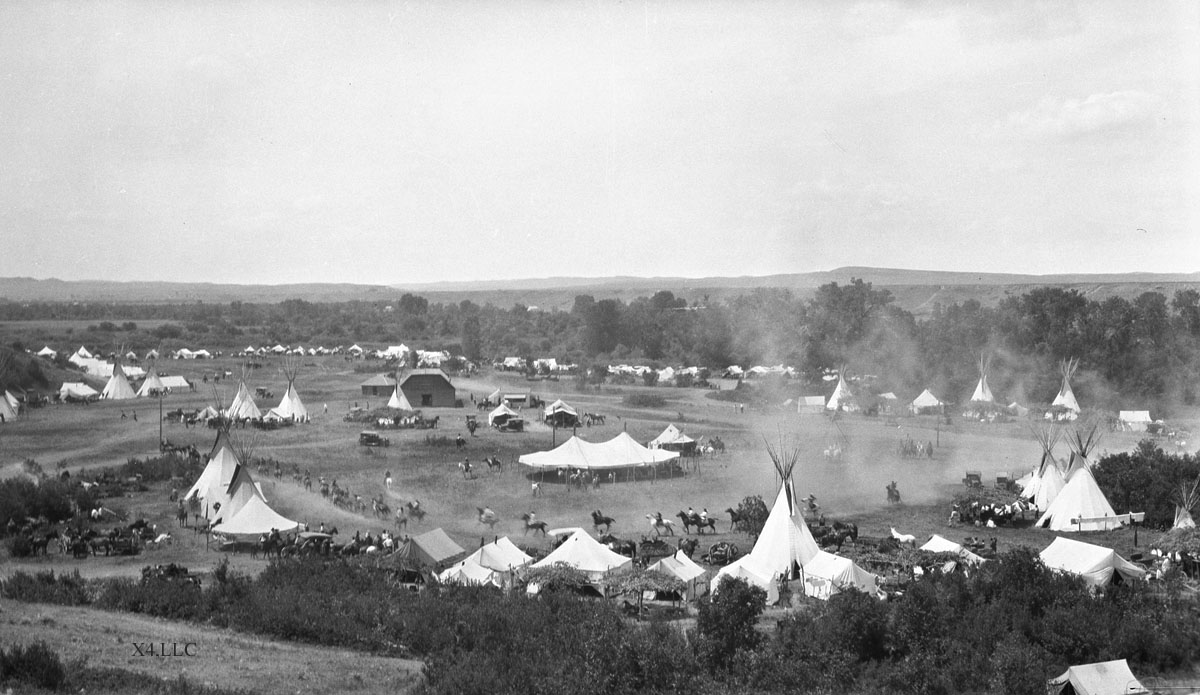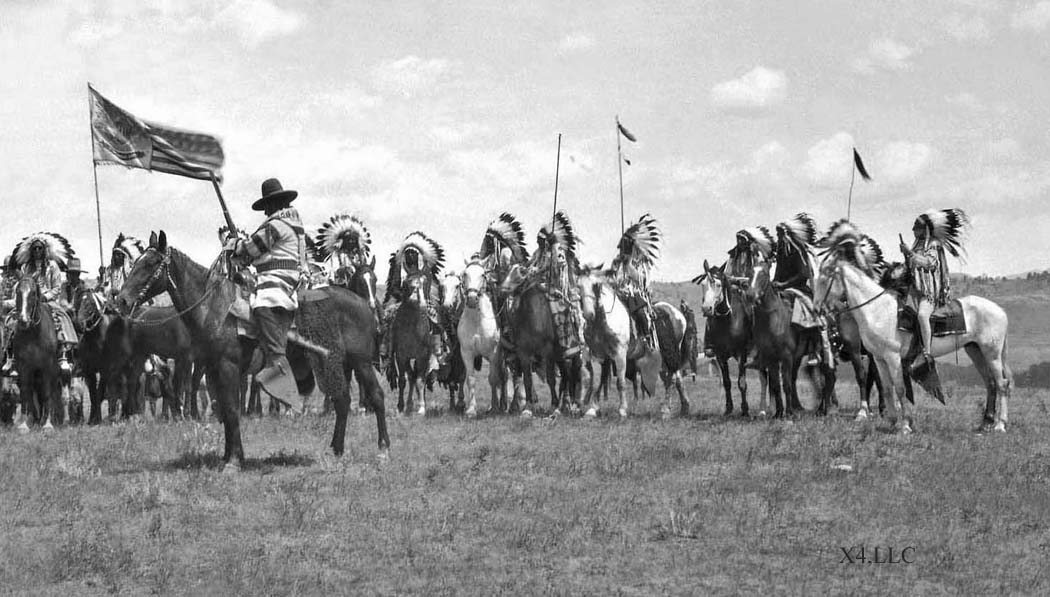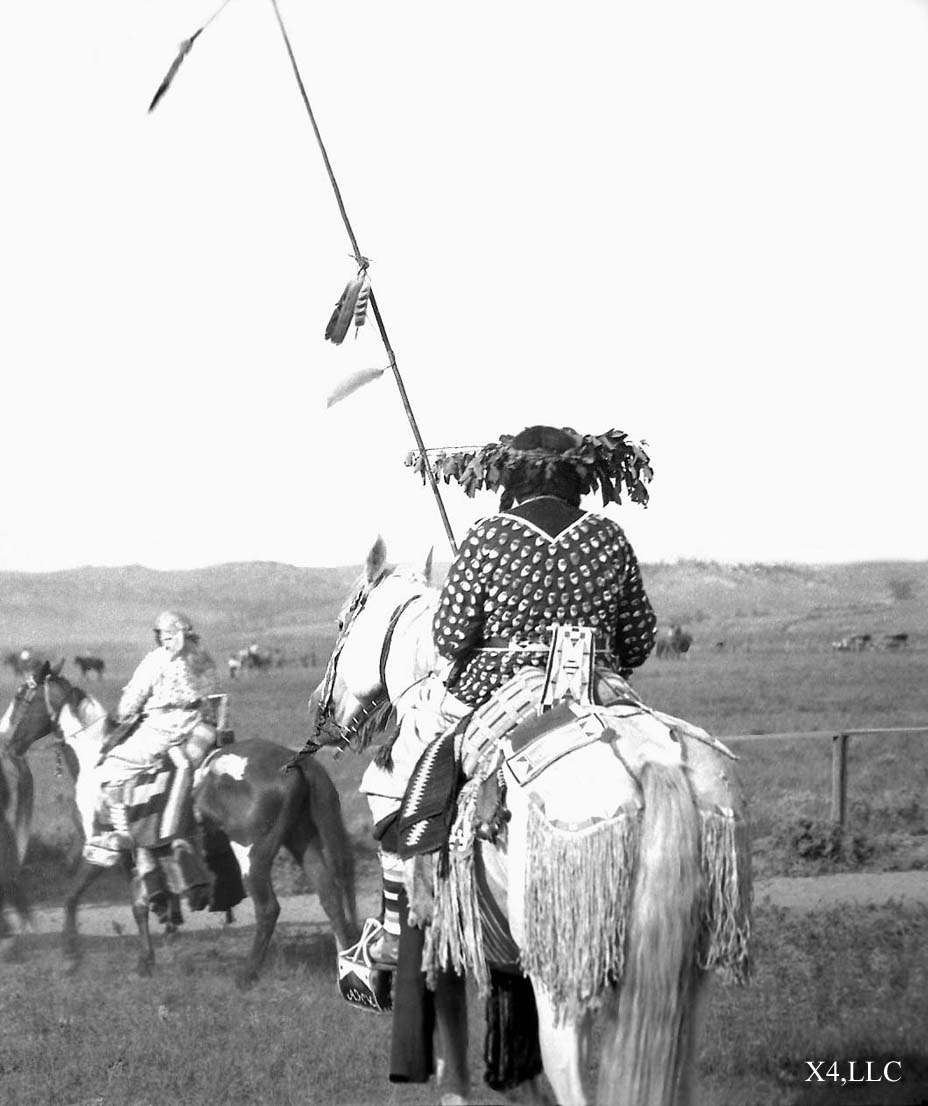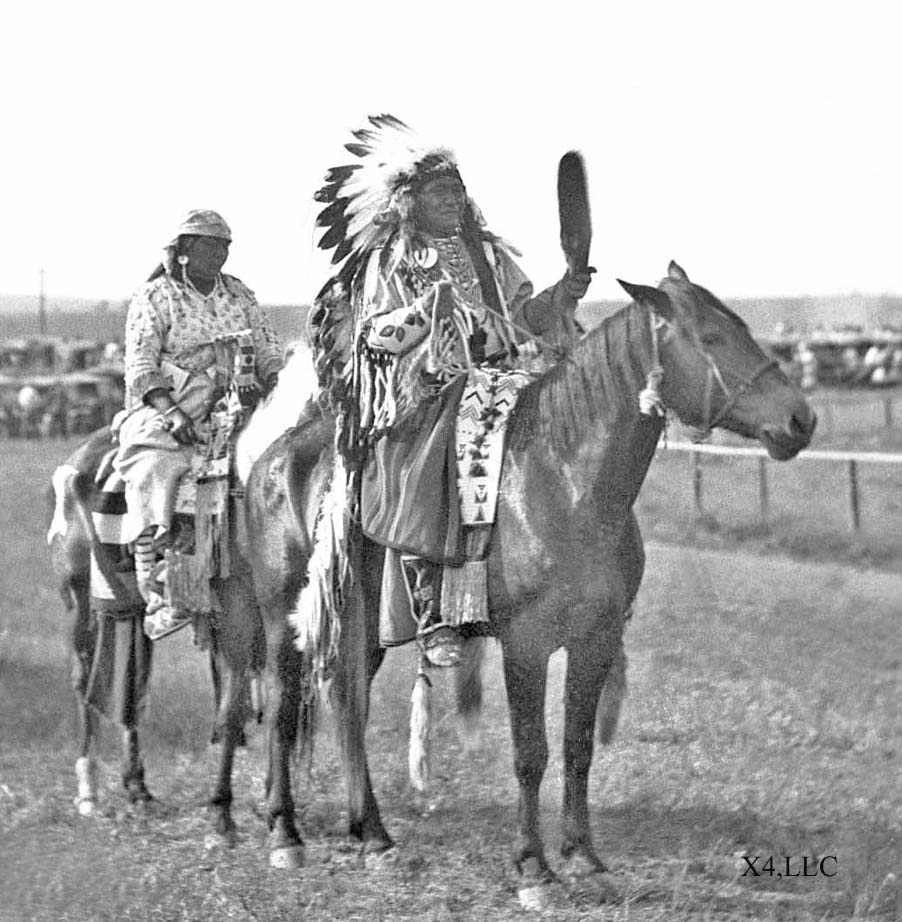THE CROW FAIR, CROW AGENCY MONTANA
Jun 19, 2025 by Tempe Javitz
One of the most important ways that the Crow tribe
retained and celebrated their cultural heritage was
through encampments and other gatherings. After
confinement to reservations, the Crow and other native
tribes were restricted from celebrating their culture
in such events. The planning stages for a Crow Fair
in August at Crow Agency finally began with the
encouragement of their agent S.C. Reynolds in 1904.
The fair this year will be the 106th according to their
website. What a relief the Crows must have felt to
finally be allowed to create an annual event to
celebrate their heritage.
The Crow Nation also began special encampments on July
fourth in the 1920s in nearby Lodge Grass, Montana. Both
events gave them an avenue to socialize, dance and parade.
These events brought the community together and provided
an excellent opportunity to share their culture with the
outside world. This also sparked the nascent tourism
industry, an important economic boost to their economy.
The Crow Fair this year is scheduled for August 13-19.
Crow Fair today is held at the Powwow Ground in Crow Agency
(near Hardin, Montana) and features traditional regalia and
dance competitions for all ages. It is now referred to as
the “tepee capital of the world." Check out the events online
at 'Crow Fair.'
My grandmother Jessamine attended the early encampments in
Lodge Grass and the Crow Fair at Crow Agency in the 1920s
and 1930s. The Encampment tents sheltered in a picturesque
bend of the Little Bighorn River. Jessamine would bring her
family and guests, often joining her father Willis with his
dudes.
This photo is from July 3, 1925 looking down into the river
valley where the Encampment took place. The riders are parading
through the middle of the camp itself.

Ida Curry, Jessamine’s frequent guest from New York, testified
in her letters to the fun and excitement at a July 4th celebration.
“About half of the Crow Indians were camped on a level plain,
some in tepees, but by far the larger numbers were in wall tents.
A few were in gay clothes but many were in plain garments. The
women, however, were gaily garbed, and jackets covered with elk
teeth were much in evidence. We dismounted and took seats in the
grand stand. There were races of Indian boys who rode bare-back,
and there was steer riding too. The rider of a steer holds to a
rope which is looped, but not tied, about the beast.”
“We were permitted to ride all about and see the outside of the
tents. Then White Arm received us in his huge tepee. It was
immaculate with lovely rugs covering the ground and the lower ten
feet of the walls. The man’s war bonnets, his skin jacket, his
wife’s elk tooth garment and much bead work were neatly displayed.
We were then treated to real Indian dances, all in their finest
and gayest attire.”

Getting ready to parade. Crow Chief Plenty Coups sits his
white horse on the far right.
The Crow Fair today is a six-day extravaganza each August. The
Fair began as a way to integrate Crow society into American life,
at a time when local and state fairs were the highlight of the
summer. Dancing and parading today also includes children and
youth from age one to seventeen years. They even have dancing
for everyone, non-Crow and Crow Style together. Crow Native Days
from June 23rd to June 29th now features all of the ‘sporting events’,
such as relay races and rodeo events. They also present a Crow art
show, an arrow tournament, and basketball games. Never a dull moment
in Crow Country in the summer.

On parade—an Elk tooth dress with braided shade hat.

White Arm and his wife dressed to parade, 1925.
The Crow Fair this year will continue the celebration
of the Crow tribe and its culture. Consider attending
this annual celebration, if not this year sometime in the
near future. The colorful costumes, the amazing dancing,
and the camaraderie is fascinating and invigorating.
Now, dear reader, don’t shirk your job.
Read more of my blogs at https://tempejavitz.com/
Or order my book if you haven’t done so already!
https://www.sdhspress.com/books/bighorn-visions
retained and celebrated their cultural heritage was
through encampments and other gatherings. After
confinement to reservations, the Crow and other native
tribes were restricted from celebrating their culture
in such events. The planning stages for a Crow Fair
in August at Crow Agency finally began with the
encouragement of their agent S.C. Reynolds in 1904.
The fair this year will be the 106th according to their
website. What a relief the Crows must have felt to
finally be allowed to create an annual event to
celebrate their heritage.
The Crow Nation also began special encampments on July
fourth in the 1920s in nearby Lodge Grass, Montana. Both
events gave them an avenue to socialize, dance and parade.
These events brought the community together and provided
an excellent opportunity to share their culture with the
outside world. This also sparked the nascent tourism
industry, an important economic boost to their economy.
The Crow Fair this year is scheduled for August 13-19.
Crow Fair today is held at the Powwow Ground in Crow Agency
(near Hardin, Montana) and features traditional regalia and
dance competitions for all ages. It is now referred to as
the “tepee capital of the world." Check out the events online
at 'Crow Fair.'
My grandmother Jessamine attended the early encampments in
Lodge Grass and the Crow Fair at Crow Agency in the 1920s
and 1930s. The Encampment tents sheltered in a picturesque
bend of the Little Bighorn River. Jessamine would bring her
family and guests, often joining her father Willis with his
dudes.
This photo is from July 3, 1925 looking down into the river
valley where the Encampment took place. The riders are parading
through the middle of the camp itself.

Ida Curry, Jessamine’s frequent guest from New York, testified
in her letters to the fun and excitement at a July 4th celebration.
“About half of the Crow Indians were camped on a level plain,
some in tepees, but by far the larger numbers were in wall tents.
A few were in gay clothes but many were in plain garments. The
women, however, were gaily garbed, and jackets covered with elk
teeth were much in evidence. We dismounted and took seats in the
grand stand. There were races of Indian boys who rode bare-back,
and there was steer riding too. The rider of a steer holds to a
rope which is looped, but not tied, about the beast.”
“We were permitted to ride all about and see the outside of the
tents. Then White Arm received us in his huge tepee. It was
immaculate with lovely rugs covering the ground and the lower ten
feet of the walls. The man’s war bonnets, his skin jacket, his
wife’s elk tooth garment and much bead work were neatly displayed.
We were then treated to real Indian dances, all in their finest
and gayest attire.”

Getting ready to parade. Crow Chief Plenty Coups sits his
white horse on the far right.
The Crow Fair today is a six-day extravaganza each August. The
Fair began as a way to integrate Crow society into American life,
at a time when local and state fairs were the highlight of the
summer. Dancing and parading today also includes children and
youth from age one to seventeen years. They even have dancing
for everyone, non-Crow and Crow Style together. Crow Native Days
from June 23rd to June 29th now features all of the ‘sporting events’,
such as relay races and rodeo events. They also present a Crow art
show, an arrow tournament, and basketball games. Never a dull moment
in Crow Country in the summer.

On parade—an Elk tooth dress with braided shade hat.

White Arm and his wife dressed to parade, 1925.
The Crow Fair this year will continue the celebration
of the Crow tribe and its culture. Consider attending
this annual celebration, if not this year sometime in the
near future. The colorful costumes, the amazing dancing,
and the camaraderie is fascinating and invigorating.
Now, dear reader, don’t shirk your job.
Read more of my blogs at https://tempejavitz.com/
Or order my book if you haven’t done so already!
https://www.sdhspress.com/books/bighorn-visions
